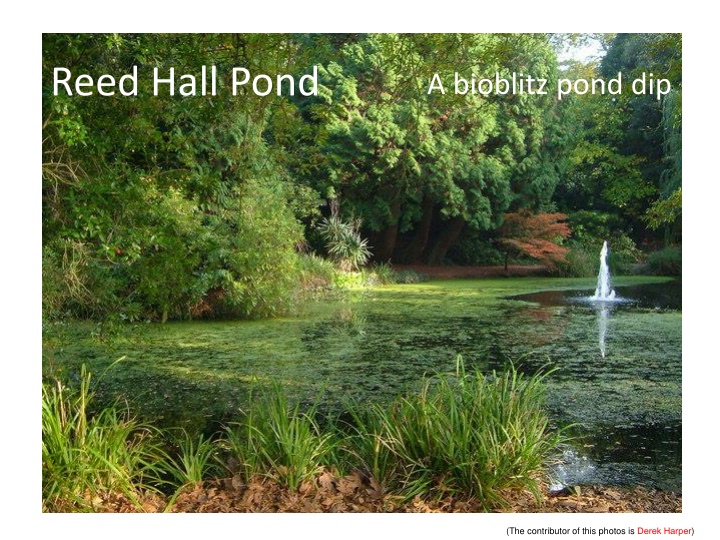
Exploring Biodiversity at Reed Hall Pond: A Comprehensive Study
Discover the rich biodiversity of Reed Hall Pond through a bioblitz pond dip event led by Derek Harper. The study involved sampling at six sites, yielding findings of 23 different animal species, including fish, snails, mayflies, damselflies, caddisflies, beetles, water bugs, flies, crustaceans, water mites, oligochaete worms, leeches, and aquatic plants. The analysis also delved into canopy shading impacts and reasons for observed phenomena, leading to corrective actions to enhance the ecosystem's health.
Download Presentation

Please find below an Image/Link to download the presentation.
The content on the website is provided AS IS for your information and personal use only. It may not be sold, licensed, or shared on other websites without obtaining consent from the author. If you encounter any issues during the download, it is possible that the publisher has removed the file from their server.
You are allowed to download the files provided on this website for personal or commercial use, subject to the condition that they are used lawfully. All files are the property of their respective owners.
The content on the website is provided AS IS for your information and personal use only. It may not be sold, licensed, or shared on other websites without obtaining consent from the author.
E N D
Presentation Transcript
Reed Hall Pond A bioblitz pond dip (The contributor of this photos is Derek Harper)
Basic facts 6 sites, 3 hours of sampling 23 different animals 1 fish 1 species freshwater snail 1 mayfly species 2 species damselflies 3 species cased caddisflies 2 species beetles 2 different water bugs 1 species fly 2 species crustacean 1 species water mite 3 different oligochaete worms 2 different leeches 6 different aquatic/emergent plants
The site Sample site 4 1 5 2 6 3
What we found 4 1 5 2 6 3
Basic stats 4 1 40 5 2 6 35 3 30 25 Number of taxa 20 Number of individuals 15 10 5 0 site 1 site 2 site 3 site 4 site 5 site 6
Canopy shading 4 1 5 2 6 3
Whats going on? 4 Impact of fountain 1 40 5 35 2 6 30 25 3 Number of taxa 20 Number of individuals 15 10 5 0 site 1 site 2 site 3 site 4 site 5 site 6 90 80 70 60 50 %shading 40 30 20 10 0 site 1 site 2 site 3 site 4 site 5 site 6
Number of taxa and Diversity 4 1 = Diversity index 5 2 6 3X 3 4X 3.6X 1 = 1 taxon, 2 individuals 3.4X 2,424 X
Reasons? Shading = reduced light = less phytoplankton production? Shading = leaves = organic input, too much? Shading = hiding places for Koi carp = heavier predation of invertebrates? Poorer aeration (unlike other end with a fountain)?
As a result Foliage trimmed back, larger plants removed Leaf litter dredged Removed choking pondweed Whole pond aerated Koi carp netted off More habitats for invertebrates created Second fountain running
